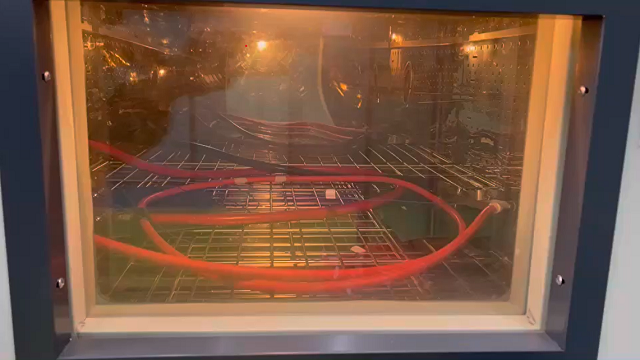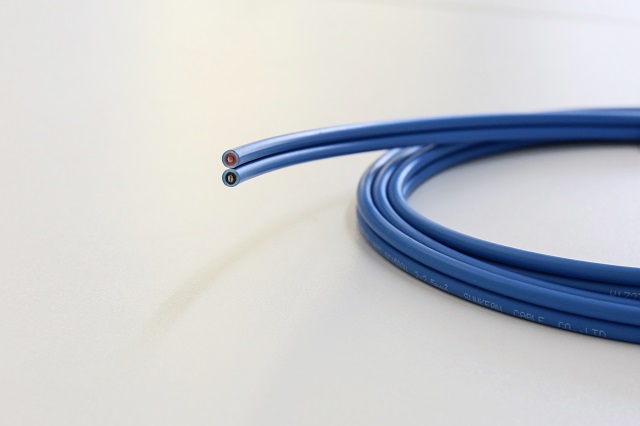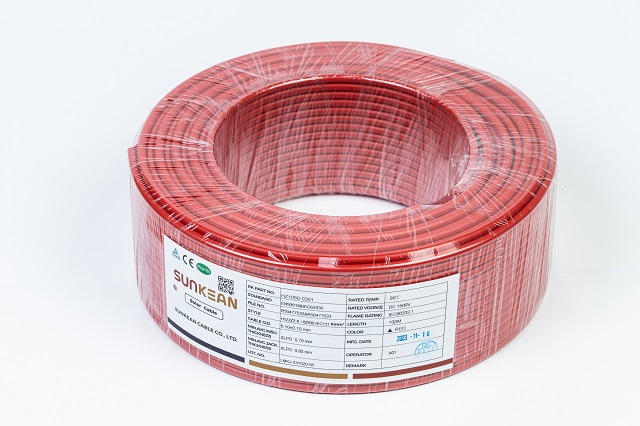Ⅰ. Introduction
Briefly introduce the concept of the cable temperature rise experiment
In the intricate web of modern infrastructure and technology, cables serve as the silent yet essential lifelines, ferrying power, and data to keep our world running smoothly. Behind their seemingly mundane appearance lies a critical aspect that often goes unnoticed—their temperature. Today, we delve into the fascinating realm of cable temperature rise experiments, a cornerstone in understanding the behavior of cables under varying conditions. At its core, this experiment seeks to unravel the intricate dance between current flow and thermal response within these unassuming conduits.
Picture this: a cable, tasked with the formidable duty of carrying electrical current, begins its journey. As electrons surge through its metallic veins, friction ensues, generating heat—a subtle but significant rise in temperature that can have profound implications on the cable's performance and longevity.
In essence, the cable temperature rise experiment endeavors to quantify this phenomenon, offering engineers and researchers invaluable insights into the thermal dynamics of cables. By subjecting cables to controlled conditions and meticulously measuring their temperature changes, we unravel a tapestry of data crucial for designing robust electrical systems, optimizing manufacturing processes, and safeguarding critical infrastructure.
Ⅱ. Understanding the Cable Temperature Rise Experiment

A. Define what the cable temperature rise experiment entails
At its essence, the cable temperature rise experiment is a methodical investigation into the thermal behavior of cables under varying operating conditions. It seeks to elucidate the relationship between electrical current flow and the resultant temperature increase within the cable structure.
Imagine a scenario where electricity courses through a conductor—a cable—connecting power sources to electrical devices. As electrons traverse the cable's metallic pathways, they encounter resistance, akin to friction, which generates heat. This process, known as Joule heating, leads to a gradual rise in the cable's temperature.
Explain the purpose of the experiment, which is to measure the temperature increase in cables under different operating conditions.
The primary objective of the cable temperature rise experiment is to quantify this temperature increase under controlled circumstances. Engineers and researchers subject cables to predetermined electrical loads, ambient temperatures, and environmental conditions, meticulously monitoring the changes in temperature over time.Typically, the experiment involves placing the cable under examination within a controlled environment, where variables such as ambient temperature and airflow can be regulated. A known electrical current is then passed through the cable, simulating real-world operating conditions. Temperature sensors strategically placed along the cable's length continuously monitor its thermal response, providing valuable data points for analysis.
B. Discuss the variables involved, such as current flow, ambient temperature, and cable material
a. Current Flow:
At the heart of the cable temperature rise experiment lies the flow of electrical current through the cable. As electrons traverse the conductor's pathways, they encounter resistance, generating heat through a phenomenon known as Joule heating. The magnitude of this heat generation is directly proportional to the current passing through the cable—higher currents lead to increased heat production and consequently, a more pronounced temperature rise.
Engineers carefully control the magnitude of current flow during experiments, often subjecting cables to varying levels of electrical load to simulate real-world conditions accurately. By studying the relationship between current flow and temperature rise, researchers gain valuable insights into a cable's thermal behavior and its capacity to handle different levels of electrical demand.
b. Ambient Temperature:
Another critical variable in the cable temperature rise experiment is the ambient temperature—the temperature of the surrounding environment in which the cable operates. Ambient temperature plays a significant role in influencing the cable's thermal equilibrium, affecting both its baseline temperature and the rate at which it dissipates heat.
In regions with extreme temperature fluctuations, such as outdoor environments or industrial settings, ambient temperature can fluctuate widely, posing challenges for cable installations. Higher ambient temperatures exacerbate the cable's temperature rise, potentially pushing it beyond safe operating limits. Conversely, colder temperatures can enhance a cable's cooling efficiency, mitigating the effects of heat generation.
During experiments, engineers meticulously control the ambient temperature to isolate its effects on the cable's thermal behavior. By studying how cables respond to different ambient conditions, researchers can optimize their designs for specific operating environments, ensuring reliability and longevity.
c. Cable Material:
The material composition of the cable itself is a crucial variable that influences its thermal characteristics. Different types of cables—such as copper, aluminum, or various alloys—exhibit varying degrees of electrical conductivity and thermal conductivity, impacting their performance under load.
For example, copper cables, prized for their excellent conductivity, are commonly used in high-demand applications where minimizing voltage drop is paramount. However, copper's relatively low thermal conductivity means that it retains heat more effectively, leading to a more significant temperature rise under load. In contrast, aluminum cables offer a balance between conductivity and cost-effectiveness but may exhibit higher resistance and temperature rise compared to copper.
During experiments, engineers select cables with specific material compositions to study their thermal behavior under controlled conditions. By comparing the temperature rise of different cable types, researchers can identify materials that offer the optimal balance of electrical performance and thermal stability for various applications.
Ⅲ. Applications in Electrical Engineering

A. Explore how the cable temperature rise experiment is crucial for designing electrical systems
Optimizing Cable Performance: In the realm of electrical engineering, the cable temperature rise experiment serves as a linchpin in the design and optimization of electrical systems. By quantifying the temperature increase within cables under different operating conditions, engineers gain invaluable insights into their thermal behavior—a critical factor in ensuring performance and longevity.
Determining Current-Carrying Capacity: One of the primary objectives of the cable temperature rise experiment is to ascertain the maximum current-carrying capacity of cables without compromising safety. As electrical currents flow through conductors, they encounter resistance, leading to heat generation—a phenomenon known as Joule heating. By subjecting cables to controlled electrical loads and monitoring their temperature rise, engineers can determine the point at which the cable approaches its thermal limits.
Ensuring Safety and Reliability: Safety is paramount in electrical engineering, and the cable temperature rise experiment plays a pivotal role in safeguarding against potential hazards. By accurately assessing the temperature rise within cables, engineers can identify potential hotspots that could lead to insulation degradation or even fire hazards. This knowledge informs the selection of cables with appropriate ratings and ensures that electrical systems operate within safe temperature limits.
Optimizing Energy Efficiency: In an era where energy efficiency is of paramount importance, the cable temperature rise experiment offers insights into minimizing wastage and optimizing power distribution. By understanding how different cable configurations and materials influence temperature rise, engineers can design more efficient electrical systems that minimize energy losses due to heat dissipation.
B. Highlight how engineers use the results to ensure safety and efficiency in power distribution networks
Ensuring Safety Through Thermal Analysis: Safety is the bedrock upon which power distribution networks are built. Any deviation from safe operating temperatures can have dire consequences, ranging from equipment failure to catastrophic fires. Engineers leverage the results of cable temperature rise experiments to meticulously analyze the thermal behavior of cables under different load scenarios. By understanding how temperature fluctuations impact cable integrity, engineers can establish operational thresholds that prioritize safety.
Optimizing Efficiency Through Data-Driven Design: Efficiency is the lifeblood of power distribution networks, where every watt counts. The results of cable temperature rise experiments provide engineers with crucial data points to optimize network performance. By determining the maximum current-carrying capacity of cables without compromising safety, engineers can design networks that operate at peak efficiency. This optimization minimizes energy losses due to heat dissipation, reducing operational costs and environmental impact.
Informing Maintenance and Upgrades: Power distribution networks are dynamic ecosystems that evolve over time. The insights gleaned from cable temperature rise experiments inform maintenance schedules and upgrade decisions. By monitoring temperature trends and identifying potential hotspots, engineers can proactively address issues before they escalate. Whether it's replacing aging cables, redistributing loads, or upgrading insulation, these proactive measures ensure the continued reliability and safety of the network.
Mitigating Risks and Enhancing Resilience: In an era of increasing environmental uncertainty, resilience is a key consideration for power distribution networks. The results of cable temperature rise experiments help engineers identify vulnerabilities and implement risk mitigation strategies. By understanding how cables respond to extreme weather events, grid fluctuations, and other external factors, engineers can design networks that are resilient in the face of adversity.
Ⅳ. Importance in Manufacturing Processes

Discuss how temperature rise affects the performance and longevity of cables used in industrial settings
Performance Considerations: Cables are the unsung heroes of industrial automation, carrying power and data to drive machinery and equipment. However, as currents course through their conductive pathways, they inevitably encounter resistance, leading to heat generation—a phenomenon known as Joule heating. This heat, if left unchecked, can elevate the cable's temperature, impacting its electrical conductivity and insulation properties. As a result, temperature rise can degrade cable performance, leading to voltage drops, signal distortion, and even equipment malfunction.
Longevity and Reliability: In the harsh environment of industrial settings, where machinery operates around the clock under demanding conditions, the longevity of cables is paramount. Elevated temperatures accelerate the aging process of cables, causing insulation breakdown, conductor fatigue, and corrosion. Over time, this degradation can compromise the integrity of the cable, increasing the risk of downtime, production delays, and safety hazards. By understanding how temperature rise affects cable longevity, manufacturers can implement preventive maintenance strategies and select cables designed to withstand the rigors of industrial environments.
Safety Considerations: Safety is non-negotiable in industrial settings, where personnel and equipment operate in close proximity. Temperature rise in cables can pose significant safety risks, particularly in environments where flammable materials or hazardous substances are present. Elevated temperatures can compromise the integrity of cable insulation, increasing the likelihood of electrical faults, short circuits, and fires. By monitoring temperature rise and implementing thermal management measures, manufacturers can mitigate these risks and ensure a safe working environment for employees.
Optimizing Thermal Management: In the quest for efficiency and reliability, manufacturers employ various thermal management techniques to mitigate temperature rise in cables. These may include ventilation systems, heat sinks, and insulation materials designed to dissipate heat and maintain optimal operating temperatures. By optimizing thermal management strategies, manufacturers can maximize the performance and longevity of cables, minimizing downtime and ensuring consistent production output.
Driving Innovation and Efficiency: As manufacturing processes evolve and technology advances, there is a growing emphasis on innovation and efficiency in cable design and manufacturing. Researchers and engineers are constantly exploring new materials, construction techniques, and thermal management solutions to enhance cable performance and reliability in industrial settings. By pushing the boundaries of innovation, manufacturers can optimize their processes, reduce energy consumption, and maintain a competitive edge in the global marketplace.
Ⅴ. Impact on Infrastructure Development
Explore the significance of the cable temperature rise experiment in infrastructure projects, such as building construction and transportation systems.
Discuss how it helps engineers select the appropriate cables for specific applications, considering factors like load capacity and environmental conditions.
Provide examples of infrastructure projects where accurate temperature rise data is critical for ensuring reliability and durability.
Ⅵ. Conclusion
If you are interested in high-quality cables and comprehensive after-sales service, welcome to visit SUNKEAN, where there are all kinds of latest cable products you need. If you have any needs, you can leave a message to our salesman, thank you for your coordination. Email: wendy@sunkean.com